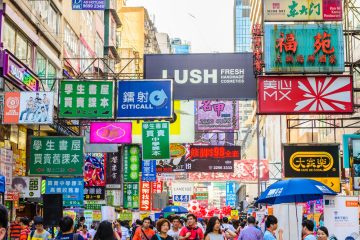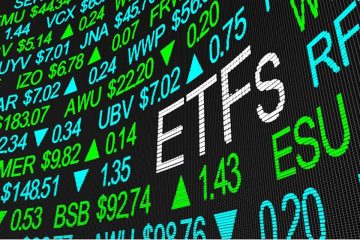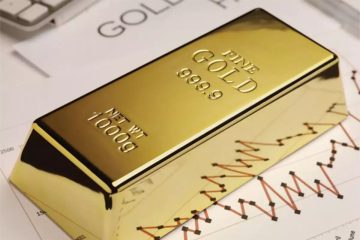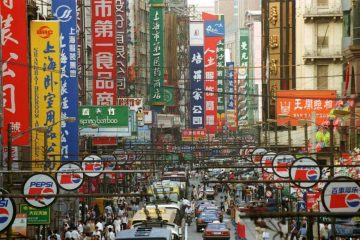Tariffs may well bring some high-tech manufacturing back to America
YOU might think a company worth $ 1trn would gain a sympathetic hearing in the White House. Not, it seems, when the subject is China. On September 7th, as President Donald Trump prepared a new salvo of tariffs on Chinese imports, Apple released a letter pleading with the administration to change tack lest it harm American consumers. “Make your products in the United States instead of China,” Mr Trump tweeted back. “Start building new plants now. Exciting!” The response reflects a view within his administration that in a trade showdown with China, America cannot lose.
Mr Trump’s officials are finalising a list of Chinese imports, of $ 200bn in value, which will be subject to new tariffs. If and when they come, they would be in addition to tariffs previously levied on $ 50bn of Chinese goods. The president has expressed himself willing to put tariffs on all Chinese imports. China, for its part, is unbowed. At a summit on September 11th Xi Jinping, the Chinese president, and Vladimir Putin, Russia’s leader, agreed to strengthen economic ties and resist American protectionism.
In a sense, America’s aggression is a less conventional, more belligerent version of a trade war many advanced economies have been itching to declare. Although China is a member of the World Trade Organisation (WTO), it engages in dubious growth-boosting measures that skirt the rules, such as pressing foreign manufacturers to share proprietary technologies as a condition of market access. Many countries would applaud if America got China to stop such practices. Tariffs of 25% on low-margin Chinese goods like clothing could hit sales in America, and can be seen as a way of cudgelling China into making concessions. But that is not the only light in which to view them. For the Trump administration may not even care whether China yields.
Apple, and firms like it, are the reason why. Stiff tariffs on high-end imported electronics are unlikely to reduce sales as much as those on cheaper items. Apple makes vast margins on its products. An analysis in 2011 concluded that it captured a staggering 58% of the iPhone’s retail price, which helps explain its towering market value. Although the planned tariffs will spare the iPhone, other Apple products that will be included, such as the Watch, are thought to enjoy similarly extravagant margins. Apple’s ability to charge so much above cost suggests that rival products are imperfect substitutes, and that it therefore enjoys pricing power in the market. Its bosses can choose whether to sacrifice sales or absorb the tariffs and accept thinner margins. Where high-end electronics are concerned, in other words, tariffs foist hard choices on domestic firms rather than China’s government.
That might be to Trump officials’ liking. Two decades ago, technology firms began outsourcing production. Asia became the dominant hub for electronics. Roughly 1.5bn smartphones were sold in 2016. At peak output, according to the IMF, smartphone components accounted for more than 33% of exports from Taiwan, and 15% of those from Singapore and South Korea. Finished smartphones accounted for 5% of Chinese exports. Although Asia captures only a modest share of the income generated by such sales, it takes much more of the associated employment—which Mr Trump covets. When Foxconn, which assembles Apple products in China, broke ground on a production plant for LCD screens in Wisconsin in June, he gleefully claimed credit.
But reclaiming portions of a supply chain is tricky. “Factory Asia” enjoys considerable efficiencies of scale. Because parts suppliers and final assembly are relatively close together, it is flexible and responsive; a trans-Pacific supply chain would be slower and less efficient. And China’s mammoth smartphone industry hoovers up skilled workers and engineers, creating demand for labour that coaxes a corresponding supply into existence. Filling such jobs in America would be hard, at least in the short run.
But hard is not the same as impossible. Officials at Apple no doubt recognise the vulnerability created by their dependence on China. When tech executives complain about China’s abuses, China hawks sympathetic to Mr Trump respond that they have only themselves to blame. As difficult as reshoring large parts of the electronics supply chain would be, the prospect of a protracted trade war may persuade some American firms to opt for the costlier, but less uncertain, option of disentangling themselves from China. And though other parts of Asia may look appealing, they might decide that reshoring to America makes most sense, given Mr Trump’s protectionist bent.
To an economic nationalist, the tariffs are a win-win proposition. Either China abandons elements of its industrial policy deemed to be unfair, or America’s tech titans reshore production, reverse the dramatic shifts in global trade of the past two decades, and rebuild a top-to-bottom domestic high-tech industry.
How do you like them apples?
The decline in manufacturing employment since 2000 has been felt keenly in many parts of America. But reshoring electronics production will not mean reshoring anything like the number of jobs that were lost in the first place, thanks to relatively high labour costs and better labour-saving technology. To the extent that firms with pricing power charge more, it will hurt consumers. And it will cause a potentially irreparable tear in the geopolitical fabric joining America and China. The norm that trade differences should be settled in a peaceful and orderly manner will have been sacrificed to no advantage for most Americans.
The harm may already have been done. Analyses of China’s accession to the WTO suggest that the reduction in uncertainty about tariff rates, rather than falling tariffs themselves, accounted for more than a third of subsequent growth in exports. Times are once more uncertain. Even if the Trump administration suddenly declares that the trade war is over, America’s tech titans will surely rethink their reliance on China. But to what purpose?
This article appeared in the Finance and economics section of the print edition under the headline “Upsetting the Apple cart”





